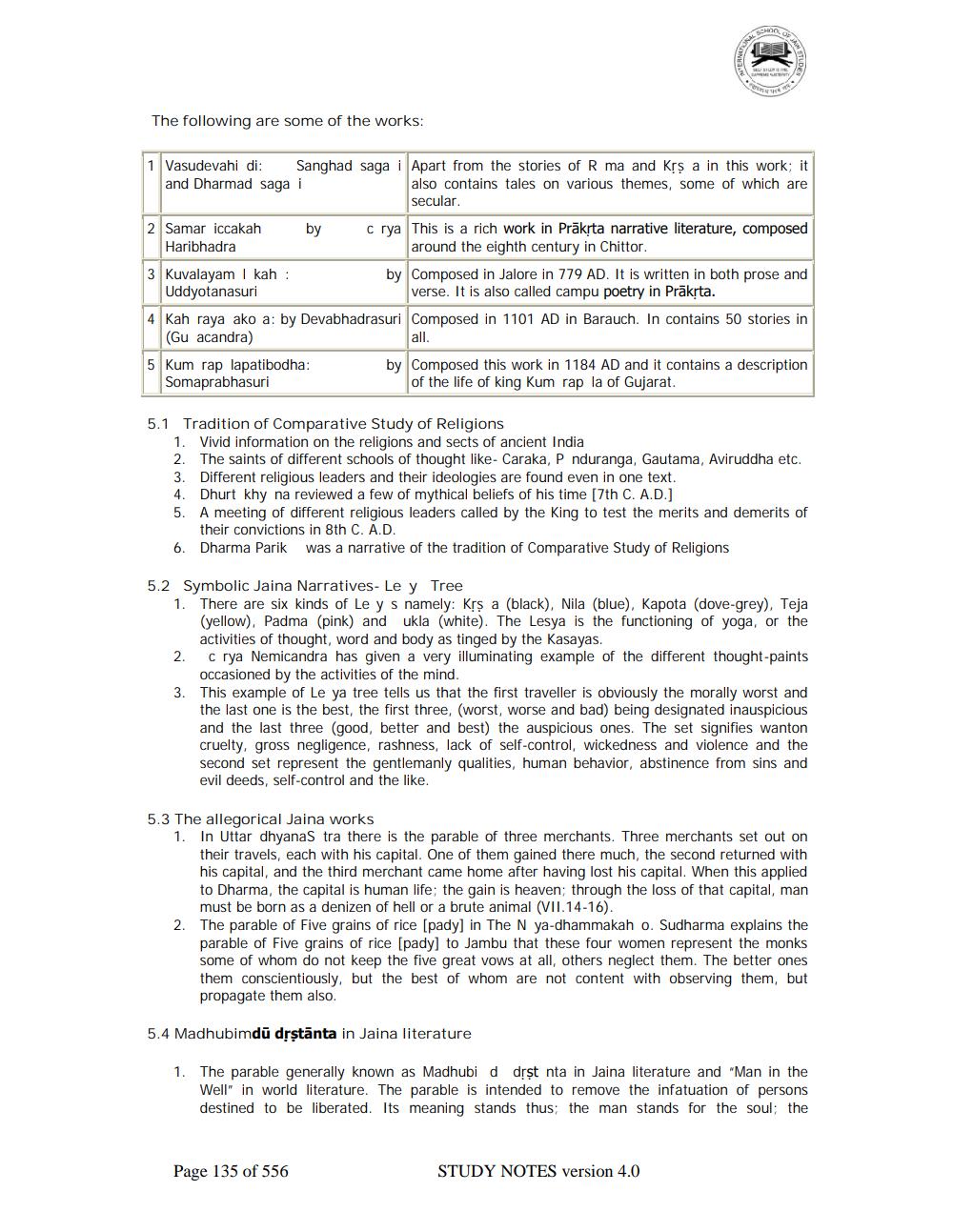________________
The following are some of the works:
1 Vasudevahi di: and Dharmad saga i
2 Samar iccakah Haribhadra
3 Kuvalayam I kah :
Uddyotanasuri
Sanghad sagai Apart from the stories of R ma and Krs a in this work; it also contains tales on various themes, some of which are secular.
by
5 Kum rap lapatibodha: Somaprabhasuri
4 Kah raya ako a: by Devabhadrasuri Composed in 1101 AD in Barauch. In contains 50 stories in (Gu acandra)
all.
c rya This is a rich work in Prākṛta narrative literature, composed around the eighth century in Chittor.
by Composed in Jalore in 779 AD. It is written in both prose and verse. It is also called campu poetry in Prākṛta.
2.
5.1 Tradition of Comparative Study of Religions
1. Vivid information on the religions and sects of ancient India
2. The saints of different schools of thought like- Caraka, P nduranga, Gautama, Aviruddha etc.
by Composed this work in 1184 AD and it contains a description of the life of king Kum rap la of Gujarat.
3. Different religious leaders and their ideologies are found even in one text.
4. Dhurt khy na reviewed a few of mythical beliefs of his time [7th C. A.D.]
5. A meeting of different religious leaders called by the King to test the merits and demerits of their convictions in 8th C. A.D.
6. Dharma Parik was a narrative of the tradition of Comparative Study of Religions
Page 135 of 556
5.2 Symbolic Jaina Narratives- Le y Tree
1. There are six kinds of Le y s namely: Krs a (black), Nila (blue), Kapota (dove-grey), Teja (yellow), Padma (pink) and ukla (white). The Lesya is the functioning of yoga, or the activities of thought, word and body as tinged by the Kasayas.
crya Nemicandra has given a very illuminating example of the different thought-paints occasioned by the activities of the mind.
3. This example of Le ya tree tells us that the first traveller is obviously the morally worst and the last one is the best, the first three, (worst, worse and bad) being designated inauspicious and the last three (good, better and best) the auspicious ones. The set signifies wanton cruelty, gross negligence, rashness, lack of self-control, wickedness and violence and the second set represent the gentlemanly qualities, human behavior, abstinence from sins and evil deeds, self-control and the like.
5.3 The allegorical Jaina works
1. In Uttar dhyanaS tra there is the parable of three merchants. Three merchants set out on their travels, each with his capital. One of them gained there much, the second returned with his capital, and the third merchant came home after having lost his capital. When this applied to Dharma, the capital is human life; the gain is heaven; through the loss of that capital, man must be born as a denizen of hell or a brute animal (VII.14-16).
2. The parable of Five grains of rice [pady] in The N ya-dhammakah o. Sudharma explains the parable of Five grains of rice [pady] to Jambu that these four women represent the monks some of whom do not keep the five great vows at all, others neglect them. The better ones them conscientiously, but the best of whom are not content with observing them, but propagate them also.
5.4 Madhubimdū dṛṣtanta in Jaina literature
1. The parable generally known as Madhubi d dṛst nta in Jaina literature and "Man in the Well" in world literature. The parable is intended to remove the infatuation of persons destined to be liberated. Its meaning stands thus; the man stands for the soul; the
STUDY NOTES version 4.0




